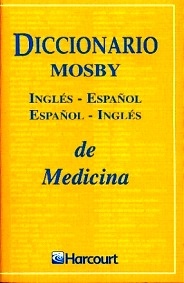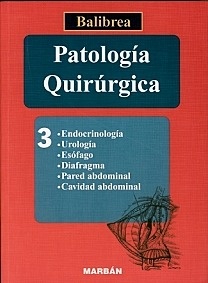The Handbook of Stress and the Brain focuses on the impact of stressful events on the functioning of the central nervous system; how stress affects molecular and cellular processes in the brain, and in turn, how these brain processes determine our perception of and reactivity to, stressful challenges - acutely and in the long-run. Written for a broad scientific audience, the Handbook comprehensively reviews key principles and facts to provide a clear overview of the interdisciplinary field of stress. The work aims to bring together the disciplines of neurobiology, physiology, immunology, psychology and psychiatry, to provide a reference source for both the non-clinical and clinical expert, as well as serving as an introductory text for novices in this field of scientific inquiry.
Part 1 addresses basic aspects of the neurobiology of the stress response including the involvement of neuropeptide, neuroendocrine and neurotransmitter systems and its corollaries regarding gene expression and behavioural processes such as cognition, motivation and emotionality.
Part 2 treats the complexity of short-term and long-term regulation of stress responsivity, the role of stress in psychiatric disorders as based on both preclinical and clinical evidence, and the current status with regard to new therapeutic strategies targetting stress-related disorders.
Contents
Part 1: The Neurobiology of Stress List of contributors. Preface. A Memorial for David de Wied. 1. Concepts of Stress. 1.1 Stress: An historical perspective S. Levine. 1.2 The Neuropsychology of stress T. Steckler. 1.3 An introduction to the HPA axis A.J. Fulford and M.S. Harbuz 1.4 Hormones of the pituitary M. Páez-Pereda and Günter K. Stalla. 1.5 Molecular biology of the HPA axis K.-B. Abel and J.A. Majzoub. 1.6 The hypothalamic-pituitary-adrenal axis as a dynamically organized system: lessons from exercising mice J.M.H.M. Reul and S.K. Droste. 2. Hypothalamic Hormones Involved in Stress Responsivitity. 2.1 Novel CRH family peptides and their receptors: an evolutionary analysis S.Y.T. Hsu. 2.2 Regulation of CRF activity on the molecular level P.H. Roseboom, N.H. Kalin, T. Steckler and F.M. Dautzenberg. 2.3 Behavioral consequences of altered corticotropin-releasing factor activation in brain: a functionalist view of affective neuroscience S.C. Heinrichs. 2.4 The roles of urocortins 1, 2 and 3 in the brain E.P. Zorrilla and G.F. Koob. 2.5 Vasopressin and oxytocin A.J. Douglas. 2.6 The role of vasopressin in behaviours associated with aversive stimuli K.C. Chambers and U.L. Hayes. 3. Stress and the HPA Axis. 3.1 Corticosteroid receptors and HPA axis regulation E.R. De Kloet, M. Schmidt and O.C. Meijer. 3.2 Glucocorticoid effects on gene expression T. Kino and G.P. Chrousos. 3.3 The role of 11 -hydroxysteroid dehydrogenases in the regulation of corticosteroid activity in the brain J.R. Seckl, J.L.W. Yau and M.C. Holmes. 3.4 Corticosteroids and the blood-brain barrier A.M. Karssen, O.C. Meijer and E.R. De Kloet. 3.5 Glucocorticoids and motivated behaviourV. Lemaire, P.V. Piazza and M. Le Moal. 3.6 Effects of glucocorticoids on emotion and cognitive processes in animals J. Prickaerts and T. Steckler. 3.7 Glucocorticoids: effects on human cognition S.J. Lupien, F.S. Maheu and N. Weekes. 4. Neurotransmitter Systems Involved in Stress Responsivitity. 4.1 Neurocircuit regulation of the hypothalamo-pituitary-adrenocortical stress response An Overview J.P. Herman, N.K. Mueller, H. Figueiredo and W.E. Cullinan. 4.2 Sympatho-adrenal activity and hypothalamic-pituitary-adrenal axis regulation Y.M. Ulrich-Lai and W.C. Engeland. 4.3 The locus coeruleus-noradrenergic system and stress: modulation of arousal state and state-dependent behavioral processes C.W. Berridge. 4.4 Functional interactions between stress neuromediators and the locus coeruleus-norepinephrine system R.J. Valentino and E.J. Van Bockstaele. 4.5 Regional specialisation in the central noradrenergic response to unconditioned and conditioned environmental stimuli S.C. Stanford and C.A. Marsden. 4.6 Stress, corticotropin-releasing factor and serotonergic neurotransmissions A.E. Linthorst. 4.7 Modulation of glutamatergic and GABAergic neurotransmission by corticosteroid hormones and stress M. Joëls, H.J. Krugers and J. M. Verkuyl. 4.8 Neuroactive steroids R. Rupprecht. 4.9 Endogenous opioids, stress and psychopathology A.L.O. Hebb, S. Laforest and G. Drolet. 4.10 Acetylcholinersterase as a window onto stress responses H. Soreq, R.Yirmiya, O. Cohen and D. Glick. 4.11 Pathways and transmitter interactions mediating an integrated stress response C.D. Ingram. 5. Neuroplasticity and Stress. 5.1 The intracellular signaling cascade and stress Y. Dwivedi and G.N. Pandey. 5.2 The role of neurotrophic factors in the stress response M.A. Riva. 5.3 Transcription factors as modulators of stress responsivity R.S. Duman, D. Adams and B.B. Simen. 5.4 Experience, structural plasticity and neurogenesis J.D. Peters and E. Gould. 5.5 Adult neurogenesis in rodents and primates: functional implications E. Fuchs and B. Czéh. 5.6 The cellular biology of the stress response J. Lu, Zs. Némethy, J.M. Pego, J.J. Cerqueira, N. Sousa and O.F.X. Almeida. 5.7 Enhancing resilience to stress: the role of signaling cascades P.-X. Yuan, R. Zhou, N. Farzad, T.D. Gould, N.A. Gray, J. Du and H.K. Manji. 6. The Stressed Brain. 6.1 Psychological and physiological stressors K.J. Kovács, I.H. Miklós and B. Bali. 6.2 Involvement of the amygdala in the neuroendocrine and behavioral consequences of stress I. Akirav and G. Richter-Levin. 6.3 Role of prefrontal cortex in stress responsivity A. Gratton and R.M. Sullivan. Subject Index. Part 2: Stress: Integrative and Clinical Aspects 1. Environmental and genetic factors influencing stress reactivity. 1.1. Hypothalamic-pituitary-adrenal-axis in postnatal life (D.M. Vázquez, S. Levine). 1.2. Early-life environmental manipulations in rodents and primates: potential animal models in depression research (C.R. Pryce et al.). 1.3. Gene targeted animals with alterations in corticotropin pathways: new insights into allostatic control (S.C. Coste, S.E. Murray, M.P. Stenzel-Poore). 1.4. Rat strain differences in stress sensitivity (B.A. Ellenbroek, E.J. Geven, A.R. Cools). 1.5. Glucocorticoid hormones, individual differences, and behavioral and dopaminergic responses to psychostimulant drugs (M. Marinelli, P.V. Piazza Bordeaux). 1.6. Social hierarchy and stress (R.R. Sakai, K.L.K. Tamashiro). 2. Stress and the immune system. 2.1. Stress-induced hyperthermia (B. Olivier et al.). 2.2. Cytokine activation of the hypothalamo-pituitary-adrenal axis (A.J. Dunn). 2.3. Glucocorticoids and the immune response (G.J. Wiegers et al.). 2.4. The molecular basis of fever (T. Cartmell, D. Mitchell). 3. Stress and psychiatric disorders. 3.1. Animal models of post-traumatic stress disorder (I. Liberzon, S. Khan, E.A. Young). 3.2. Neuroendocrine aspects of PTSD (R. Yehuda). 3.3. Depression and effects of antidepressant drugs on the stress systems (S. Modell, F. Holsboer). 3.4. A contemporary appraisal of the role of stress in schizophrenia (R.R.J. Lewine). 3.5. Atypical antipsychotic drugs and stress (C.E. Marx et al.). 3.6. The role of stress in opiate and psychostimulant addiction: evidence from animal models (L. Lu, Y. Shaham). 3.7. Stress and drug abuse (R. Sinha). 3.8. Stress and dementia (E. Ferrari et al.). 4. Novel treatment and strategies targeting stress-related disorders. 4.1. CRG antagonists as novel treatment strategies for stress-related disorders (T. Steckler). 4.2. Non-peptide vasopressin V1b receptor antagonists (G. Griebel, C. Serradeil-Le Gal). 4.3. Substance P (NK1 receptor) antagonists (N.M.J. Rupniak). 4.4. Glucocorticoid antagonists and depression (J.S. Andrews). Subject Index.




